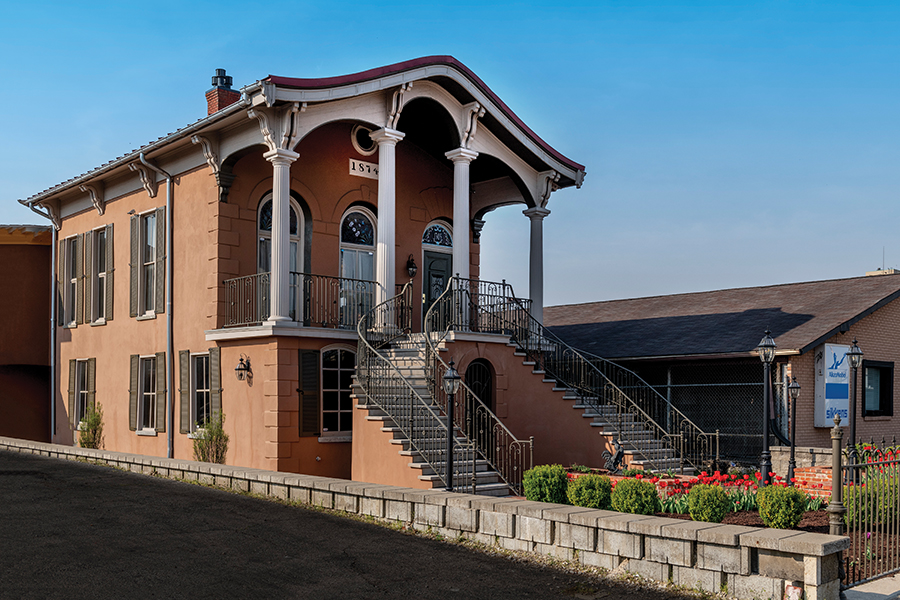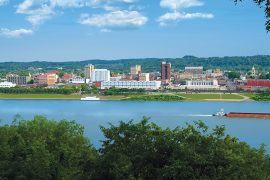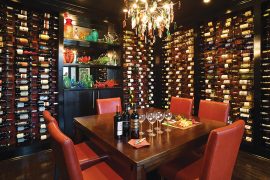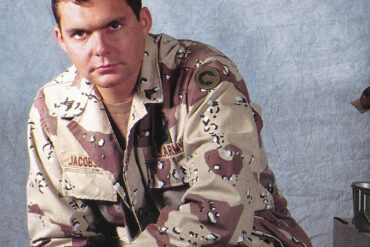Jim and Mickey St. Clair, along with the Kaiser-Gerlach Foundation, have spent the last 22 years preserving and restoring Huntington’s historic Coin Harvey house.
By Kimberly Price
HQ 113 | SPRING 2021
In the early 1870s, as the new railroad terminal was bustling and drawing visitors to Huntington, a 23-year-old farmer from Buffalo, West Virginia, was planning to add his personal touch on the young, prosperous city. In 1874, William Hope “Coin” Harvey built what has been deemed an architecturally perfect, New Orleans-style home that still stands today in the heart of Huntington.
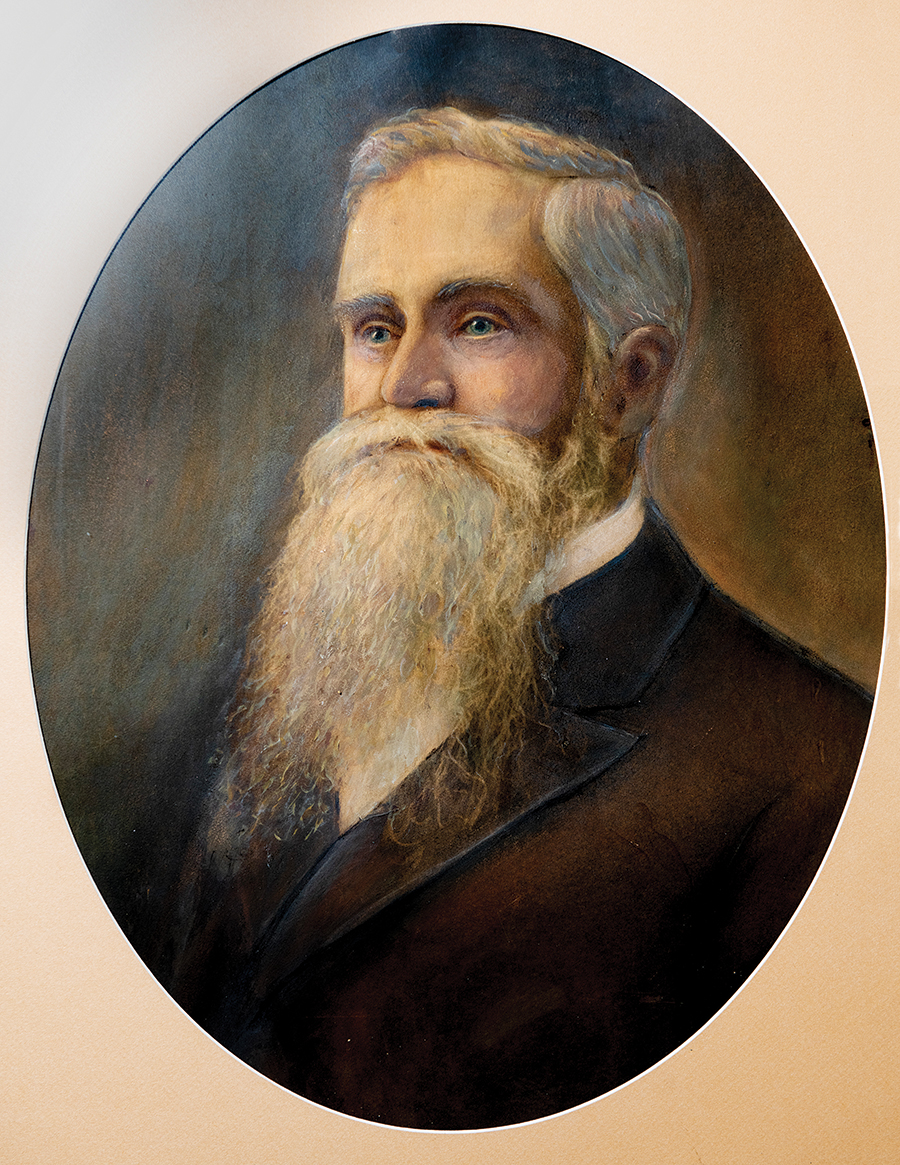
“Coin Harvey had an uncle who lived in New Orleans,” said Mickey St. Clair, acting secretary and treasurer of the E.J. & Lenore Kaiser and David E. Gerlach Foundation, which owns the Coin Harvey House. “When Coin visited his uncle, he fell in love with the style of the homes and modeled the house after three of them.”
Harvey built the house at 1305 Third Ave. facing the Ohio River in the area of Huntington known as Society Row, where many of the wealthiest citizens lived.
“The house is the last of the beautiful homes that were built on Third Avenue’s Society Row,” Mickey noted. “The Harvey family was in the building business in Buffalo, and they built a lot of homes in Huntington at the time; but Coin built this one himself. Then, he fell in love with a girl from Gallipolis and moved there to practice law.”
When traveling through downtown Huntington today, the home is easily recognized by its classical style, with symmetric design, Tiffany-style windows, a courtyard and a curved double staircase leading to the front door. The garden features herringbone brick sidewalks and various plantings, including hundreds of tulips.
The charming structure that stands today is a direct reflection of the love and care that Mickey, her husband Jim St. Clair and members of the Kaiser-Gerlach Foundation’s board have shown the building over the past 22 years. The previous owner of the home, Lenore Kaiser, inherited the house in 1945 when her father, Dr. Earl E. Gerlach, passed away. Then when Kaiser died in 1999, she deeded the home to the foundation, naming Jim the trustee.
“Lenore wanted the house to be preserved as a historical museum,” Mickey said. “When the foundation inherited the house, it was in really bad shape. The house had suffered termite damage, and a section had to be torn down.”
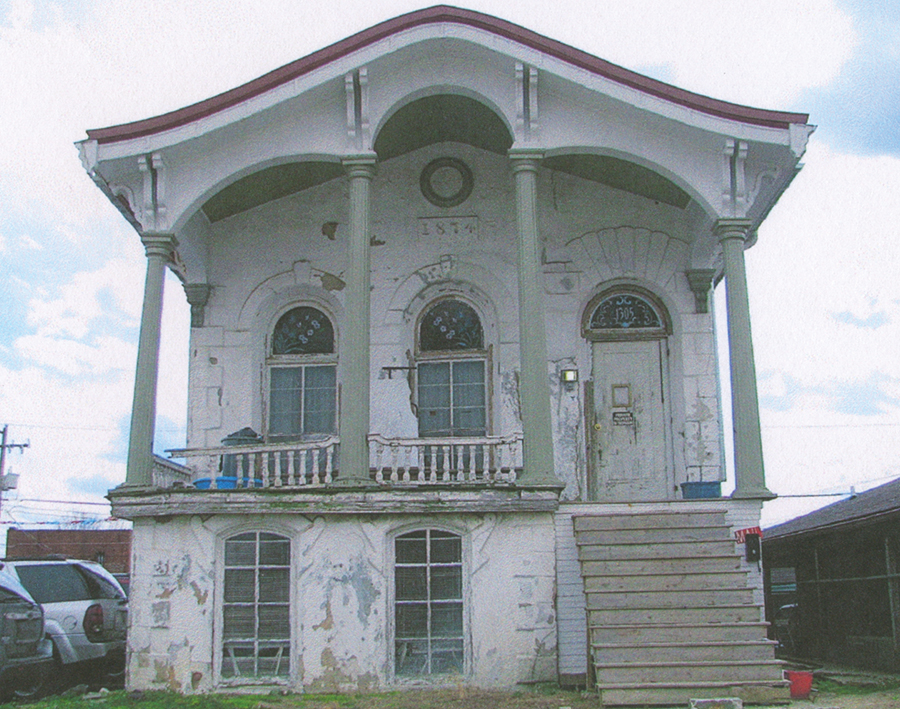
The home’s historical significance stems from Harvey, who graduated from Marshall College and became a writer, a renowned economist, an attorney and a presidential candidate, running against Franklin D. Roosevelt in 1932. He is most known for his theories on the free coinage of silver, earning him the nickname “Coin,” and his advocacy for bimetallism, which sought to give silver the same monetary status as gold.
That history, along with the home’s architectural and cultural significance, ensured the Coin Harvey House’s preservation for future generations. In 1971, Mickey, who was president of the Cabell-Wayne Historical Society, secured the home a place on the National Register of Historic Places.
At the turn of the 20th century, Marshall University President Dr. Lawrence J. Colby described the house this way: “It is the most beautiful house I have ever seen in Europe and America because of its symmetry, proportions and curved chastity of the front. The whole design approaches perfection in its type of classical architecture.”
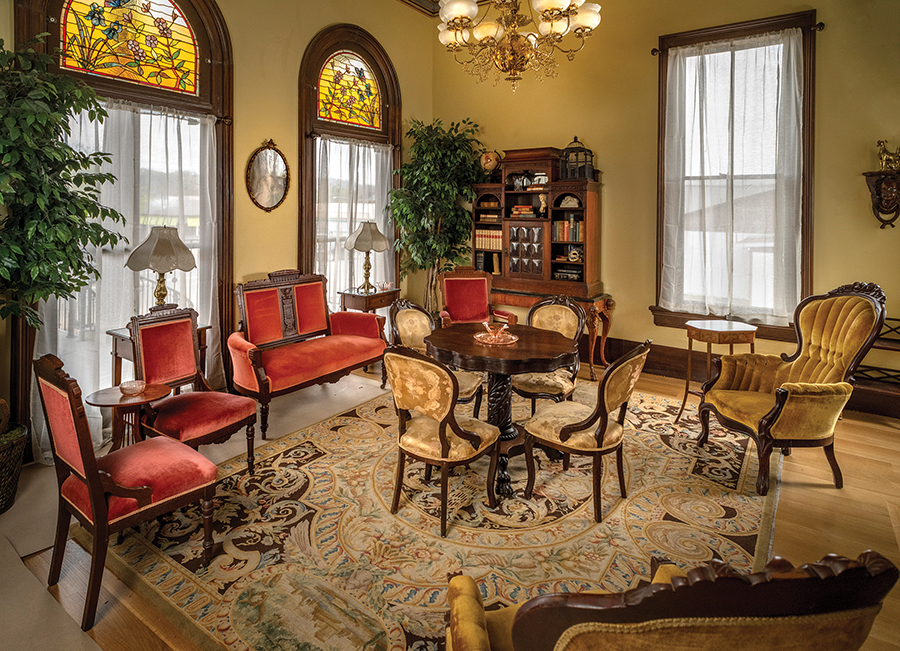
The design and layout of the Coin Harvey House has changed significantly over the years. Some of the original architectural elements, including the exterior double curved staircase, an interior staircase and the wrought iron balcony that spanned the west side of the house, had disappeared. The home was also affected by flooding, which was common before the city’s floodwall was built in 1943.
“The house was built with a brick foundation on dirt,” Mickey noted. “Over the years, flooding caused a lot of irregularity and damage, so we put in steel beams to level the floors and added a concrete foundation. New reproduction columns made of fiberglass were also installed on the front of the house.”
Since the Kaiser-Gerlach Foundation inherited the Coin Harvey House, many of the home’s original features have been restored, including the notable double staircase, three fireplaces and a chimney. A local artist was commissioned to revive the cast iron mantel in the parlor, the ceiling medallions and a mural in the library. Interior and exterior walls have been repaired and painted based on original colors; and the foundation has installed a new roof and gutters, insulation and updated electrical, plumbing and heating systems.
Though much has been done, the foundation continues to seek funding for future restoration. Plans include rebuilding the interior staircase, purchasing historic furnishings and installing a lift to make the home more accessible to the community.

“We are restoring the kitchen now and have installed a vintage gas stove and a reproduction refrigerator. We are getting ready to order cabinets and finish the countertop,” Mickey said. “And we hope to start on the iron balcony soon.”
How You Can Help
For more information about the Coin Harvey House, please visit www.coinharvey.com. Donations can be made by check payable to Coin Harvey House, P.O. Box 592, Huntington, WV 25710, or by calling (304) 710-0952 or (304)972-3883. The E.J. & Lenore Kaiser and David E. Gerlach Foundation is also seeking period-specific furnishings for the house, which are listed on the website.

